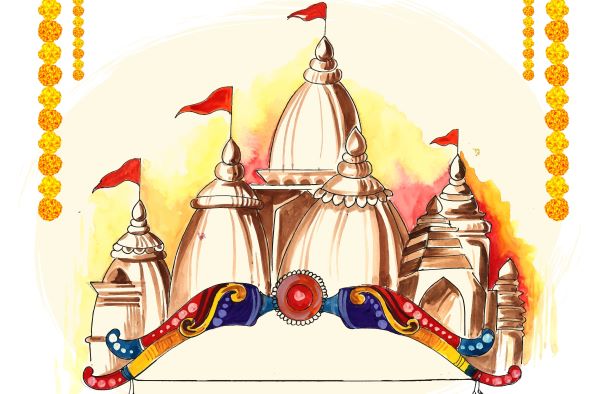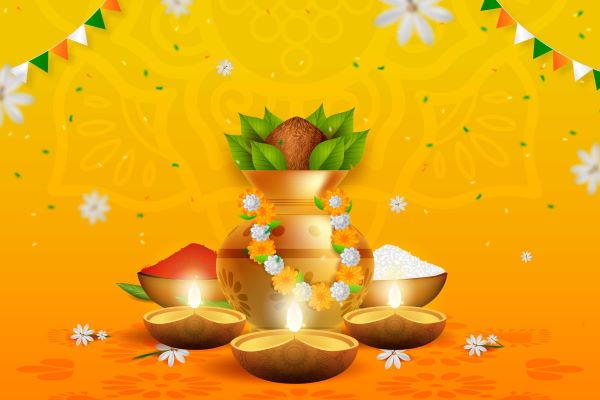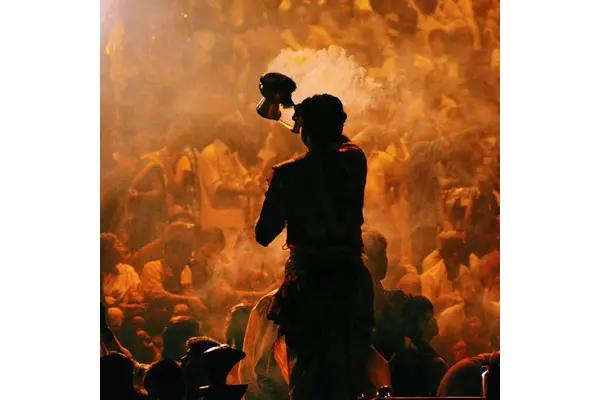
Explore the Spiritual Oasis: Discover A Hindu Mandir Near Me
In our busy world full of modern chaos, there's a calm and special place where spirituality, history, architecture, and community come together. Hindu Mandirs, also known as temples, are like timeless symbols of devotion that give a deep spiritual experience to those seeking it and even to those who are just curious.
In this journey, we'll explore why Hindu Mandirs are important, learn about their long history and beautiful architecture, understand the rituals and practices that make these places special, and help you find a Hindu Mandir nearby.
Significance of Hindu Mandirs
Hinduism, a rich and ancient religion, expresses its spirituality through the Mandir, highlighting the worship of deities representing different aspects of the supreme cosmic power.
A Hindu Mandir goes beyond being a mere prayer space; it acts as a spiritual powerhouse emitting positive energy, offering solace and guidance. Additionally, the acronym TEMPLE, representing Tranquility, Education, Medication, Purification, Love, and Engagement, denotes these institutions as more than spiritual spaces—they are integral institutes offering valuable services to society.
Within the confines of a Hindu temple, all cosmic elements that sustain life are present, creating a holistic environment from fire to water, from nature images to deities, and fleeting sounds to eternal nothingness.
History and Architecture of Hindu Mandirs
The story of the Hindu Mandir is like a beautiful woven fabric, made with threads of culture, tradition, and amazing architecture. From the detailed carvings in Khajuraho to the impressive Shri Gauri Shankar Mandir, each temple tells a tale of dedication and skill.
The architecture is not just aesthetically pleasing; it's a divine symphony. Intricately designed spires reach towards the heavens, while the inner sanctums house the sacred idols with reverence. Every corner echoes the spirituality of centuries, encapsulating the essence of Hindu philosophy in stone and mortar.
Rituals and Practices at Hindu Mandirs
1. Offerings to Deities
Worshippers offer flowers, fruits, or symbolic items as a gesture of respect and a way to seek blessings.
2. Role of Priests
Many Mandirs have priests who perform rituals, explain their significance, and guide worshippers.
3. Daily and Special Ceremonies
Daily rituals and special ceremonies, especially during festivals, contribute to the sacred atmosphere. They involve decorations, processions, and community gatherings, fostering a sense of joy and community among devotees.
4. Lighting of Lamps
When lamps or candles are lit at Hindu Mandirs, it symbolizes the act of dispelling darkness and ignorance.
The Spiritual Experience at a Hindu Mandir
Upon entering the Mandir, let the divine energy surround you. Experience the coolness of the marble beneath your feet, listen to the gentle echoes of prayers, and observe the vibrant colours adorning the sacred idols. It's more than just an aesthetic encounter; it's a spiritual immersion that goes beyond the ordinary, leaving a lasting impression on the heart. It becomes a personal odyssey where the mind finds peace, and the soul discovers tranquility.
Some distinct temple traditions offer insights into Hindu culture and tradition
a). Panch-Snaan: A Bath To The Deities
An elaborate ritual involves bathing temple idols with sacred substances like cow milk, curd, ghee, honey, liquid jaggery, and water. The distributed Panchamrit holds spiritual significance, with accompanying mantras enhancing the ceremony.
b). Offering Bel Patra To Idols: Adorning Idols
A practice of adorning deities with fresh flowers, fruits, and the revered Bel Patra or Bilva leaf, particularly favoured by Lord Shiva. This offering, laden with symbolic and medicinal significance, is concluded with chants and the distribution of Prasad.
c). Aarti – Puja: Offering Prayers to Idols
A ceremony of lights where lamps are waved before idols, symbolizing God as the center of all activities. It emphasizes humility, gratitude, and immersion in the divine, with circular motions representing the five elements.
Breaking of Coconut
An act commonly observed in temples where breaking a coconut symbolizes breaking one's ego and pride before the deity. The coconut, considered a pure offering, represents the person's ego, and breaking it signifies humility and readiness for success.
d). Tilak: Applying Tilak on the Forehead
A ritual involves marking the forehead with fragrant pastes, like sandalwood or vermilion, as a sign of devotion and welcome. These marks, associated with different deities, impart peace and positive vibrations.
Visiting a Hindu temple provides a glimpse into these intricate rituals and traditions, offering a profound cultural experience. These practices, deeply rooted in Hinduism, also extend beyond temple visits, enriching various aspects of life and societal interactions.
Last but not least...
As we conclude this exploration, consider taking a step towards a local gem, the Shri Gauri Shankar Mandir. Nestled in Canada city, encapsulates the essence of Hindu spirituality. With its intricate architecture, vibrant rituals, and warm community, it beckons you to embark on a journey where history, culture, and spirituality converge.
In the heart of the city, we stand as a testament to the timeless wisdom and devotion embedded in Hinduism. Whether you seek solace, knowledge, or simply a moment of quiet reflection, the Shri Gauri Shankar Mandir welcomes you with open doors and open hearts.
Discover the spiritual oasis that awaits you. Let the journey begin, not just as a visitor, but as a fellow seeker on the path of enlightenment.





